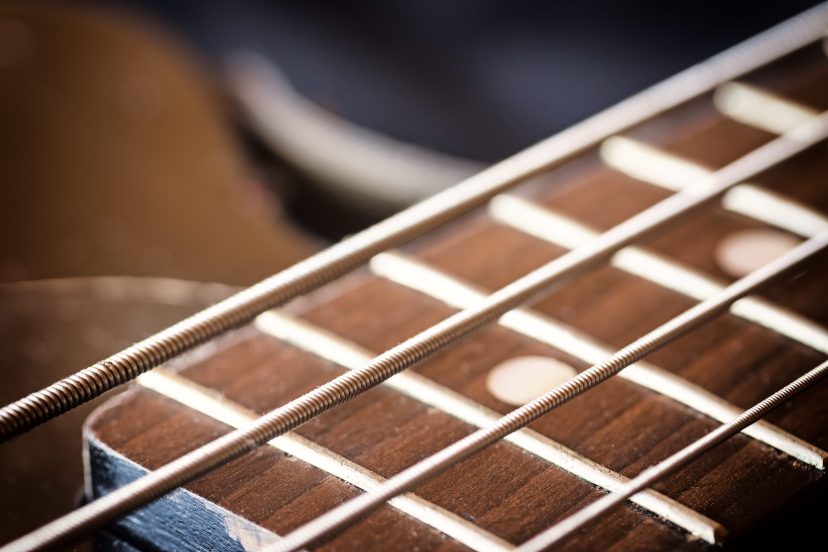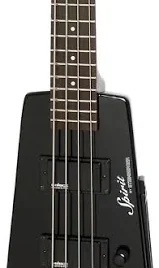How to Fix Fret Buzz on Bass Guitar
Mastering Fret Buzz
I’ve encountered my fair share of fret buzz over the years. It’s a common issue that can plague even the most experienced musicians. In this guide, I’ll share everything I’ve learned about diagnosing, fixing, and preventing fret buzz on your bass guitar. With some knowledge and tools you can learn how to fix fret buzz on bass guitar.
Understanding Fret Buzz
Fret buzz occurs when a vibrating string makes contact with one or more frets, producing an unwanted sound. This can range from a subtle hum to an outright rattle. While a small amount of buzz might be normal and even inaudible through an amplifier, excessive buzz can seriously impact your tone, sustain, and overall playing experience.
Common Causes of Fret Buzz
- Low Action: The height of your strings above the fretboard is too low, causing the strings to contact the frets when vibrating.
- Improper Neck Relief: The slight forward bow in your bass’s neck is either too little or too much.
- Uneven or Worn Frets: Frets can wear down unevenly over time, creating high and low spots.
- Nut Slot Issues: Nut slots that are too deep can cause open string buzz, while slots that are too shallow can lead to high action and intonation problems.
- Bridge Saddle Height: Incorrect bridge saddle height affects string action and can contribute to fret buzz.
- Environmental Factors: Changes in humidity and temperature can cause the wood in your bass to expand or contract, potentially leading to neck movement and fret buzz.
Diagnosing Fret Buzz
Before you start making adjustments, it’s crucial to pinpoint the source of the problem. Here’s how to diagnose fret buzz:
- Identify Affected Areas: Play each string individually and note which strings and frets are producing buzz.
- Open vs. Fretted Notes: Check if the buzz occurs on open strings, fretted notes, or both.
- Neck Relief: Sight down the neck’s length to check for proper relief.
- Fret Wear: Inspect the frets for visible wear or unevenness.
- Nut Slots: Examine the nut slots for proper depth and width.
- Bridge Saddles: Assess the bridge saddle height and intonation.
Essential Tools for Bass Setup
Firstly, make sure you have these tools on hand:
- Allen wrenches (for truss rod and bridge adjustments)
- Feeler gauges
- Ruler or string action gauge
- Capo
- Screwdrivers
- Fret rocker (for checking fret levelness)
- Neck support (for working on the instrument)
Get Guitar Luthier Tool Set on Amazon
Step-by-Step Solutions for Fret Buzz
1. Adjusting Neck Relief
The first step in addressing fret buzz is ensuring proper neck relief:
- Place a capo on the first fret.
- Press the string at the last fret.
- Check the gap between the string and the 8th fret.
Aim for a gap of about 0.010″ (0.25mm) for most basses.
- If adjustment is needed, locate the truss rod access point (usually at the headstock or body end of the neck).
- Use an suitable Allen wrench to make small adjustments:
- Clockwise turn: Reduces relief (straightens the neck)
- Counterclockwise turn: Increases relief (adds bow to the neck)
- Make small adjustments (1/4 turn max) and recheck.
Pro Tip: Always make truss rod adjustments gradually and give the neck time to settle before making further changes. This process may take several hours or even overnight.
2. Setting String Action
If neck relief is correct but buzz continues, it’s time to adjust the string action:
- Measure the string height at the 12th fret using a ruler or string action gauge.
- Raise or lower the bridge saddles to achieve the desired height.
- For most basses, aim for these approximate heights:
- E string: 2-2.5mm (5/64″ – 3/32″)
- A string: 1.8-2.3mm (4/64″ – 5/64″)
- D string: 1.6-2.1mm (1/16″ – 5/64″)
- G string: 1.5-2mm (1/16″ – 5/64″)
- Make small adjustments and test each string thoroughly.
Remember, these are starting points. Your ideal action may vary based on your playing style and personal preferences.
3. Leveling and Crowning Frets
Uneven frets can cause persistent buzz even with proper neck relief and action. Here’s how to address this:
- Use a fret rocker to identify high spots on the fretboard.
- If you find uneven frets, you’ll need to level them:
- Use a leveling beam with fine-grit sandpaper (400-600 grit).
- Carefully sand down the high spots, checking often with the fret rocker.
- Once the frets are level, re-crown them using a crowning file.
- Polish the frets to restore shine using progressively finer grits (up to 2000 grit).
Key Insight: Fret leveling is a delicate process that needs patience and precision. If you’re not confident in your skills, it’s best to leave this to a professional luthier.
4. Addressing Nut Slot Issues
Improper nut slot depth can cause open string buzz or high action near the headstock:
- Check string height at the first fret.
With the string pressed at the third fret, there should be a tiny gap (about 0.002″ or 0.05mm) between the string and the first fret.
- If the gap is too large, the nut slots may need to be deepened:
- Use nut files that match the string gauge.
- File slowly and check often to avoid over-cutting.
- If the strings are sitting too low in the nut:
- Consider replacing the nut entirely.
- Alternatively, you can fill the slots with a mixture of bone dust and super glue, then re-cut them to the proper depth.
Get Bass Guitar Nuts on Amazon
5. Shimming the Neck
For bolt-on necks with angle issues, shimming can help:
- Remove the neck from the body.
- Add a thin shim (wood veneer or a commercially available shim) to the neck pocket.
- Reattach the neck and adjust as needed.
Shimming can help achieve better string-to-fretboard alignment, especially if you’ve maxed out your bridge height adjustments.

Common Pitfalls to Avoid
- Over-tightening the truss rod: This can damage the neck or even break the rod.
Always make small adjustments.
- Lowering action too much: While low action can feel great, it often leads to more buzz.
Find a balance between playability and clean sound.
- Neglecting environmental factors: Sudden changes in humidity or temperature can undo your hard work.
Consider using a humidifier or dehumidifier to maintain stable conditions.
- Ignoring playing technique: Sometimes, the buzz is coming from your fingers, not your bass.
Work on your fretting hand technique to minimize unwanted noise.
- Making too many changes at once: Adjust one thing at a time and test thoroughly before moving on to the next adjustment.
Adapting to Different Bass Types
Every bass is unique, and what works for you might not work for another. Here are some tips for adapting these techniques:
Active Basses
- Be aware that pickup height can affect string vibration and potentially contribute to buzz.
- Adjust pickup height after setting your action and relief.
Fretless Basses
- Focus more on neck relief and action, as fret leveling isn’t applicable.
- Pay extra attention to the fingerboard surface condition.
Extended Range Basses (5+ strings)
- You may need to set a slightly higher action on the lower strings to accommodate their greater vibration.
- Consider using a multi-scale or fanned fret design for better tension balance across all strings.
Building on the Basics
Understanding and fixing fret buzz is a crucial step in mastering bass guitar maintenance. This knowledge serves as a foundation for more advanced setup techniques, such as:
- Fine-tuning intonation: Ensure your bass plays in tune across the entire fretboard.
- Optimizing pickup height: Balance output and string pull for the best tone and playability.
- Customizing string gauge and tension: Experiment with different string sets to find your ideal feel and tone.
- Exploring choice bridge and nut materials: Upgrade components for improved sustain and tone.
- Understanding and adjusting your bass’s electronics: Optimize your tone controls and preamp settings.
As you become more familiar with your instrument’s mechanics, you’ll develop an intuitive sense of how small adjustments affect your bass’s playability and tone.
Practice Makes Perfect
To reinforce your learning and develop your setup skills, try these exercises:
- Perform a full setup on your bass, documenting each step and the results.
This will help you track your progress and understand the impact of each adjustment.
- Experiment with different action heights and neck relief settings to find your sweet spot.
Keep notes on how each change affects your playing and tone.
- Learn to identify fret buzz by ear and pinpoint it’s location on the fretboard.
This skill will help you quickly diagnose issues during gigs or recording sessions.
- Set up basses for friends or bandmates (with their permission, of course).
Working on different instruments will broaden your experience and problem-solving skills.
- Record before and after sound samples when making adjustments.
This will train your ear to hear subtle changes in tone and playability.
Remember, becoming proficient at bass setup and maintenance takes time and practice. Don’t be discouraged if your first tries aren’t perfect – each adjustment is a learning opportunity.
Advanced Techniques for the Dedicated Bass Tech
Once you’ve mastered the basics, you might want to explore some more advanced techniques:
Partial Refrets
If only a few frets are worn, you can replace them individually:
- Remove the old fret carefully.
- Clean the fret slot thoroughly.
- Cut a new fret to size and install it.
- Level and crown the new fret to match the others.
Compound Radius Fingerboards
Some basses have fingerboards with a changing radius from nut to bridge:
- Use a radius gauge set to check the fingerboard’s curve at different points.
- Adjust your fret leveling and crowning technique to maintain the compound radius.
Graphite Nut Installation
Upgrading to a graphite nut can improve tuning stability and reduce string binding:
- Remove the old nut carefully.
- Shape the new graphite nut to fit the slot perfectly.
- Cut the string slots to the proper depth and width.
- Install using a tiny amount of adhesive.
Fretboard Conditioning
Keep your fretboard in top condition:
- Clean the fretboard thoroughly with a gentle cleaner.
- For unfinished woods (like rosewood or ebony), apply a light coat of lemon oil or dedicated fretboard conditioner.
- For maple fretboards, use a slightly damp cloth and avoid oils.
Troubleshooting Persistent Issues
Sometimes, despite your best efforts, fret buzz continues. Here are some less common issues to check:
- Twisted Neck: Sight down the neck from the headstock.
If it appears twisted, this is a job for a professional luthier.
- Loose Frets: Tap along each fret with a small screwdriver.
A loose fret will sound different and may need re-seating.
- Bridge Issues: Check for any loose parts or cracks in the bridge assembly.
- Body Resonance: Sometimes, certain notes can cause sympathetic vibrations in the body.
Try dampening different areas to isolate the source.
- Pickup Interference: Very rarely, pickups set too high can interfere with string vibration.
Try lowering them slightly.
The Importance of Regular Maintenance
Preventing fret buzz is often easier than fixing it. Develop a regular maintenance routine:
- Clean your bass after each playing session.
- Check and adjust tuning machines regularly.
- Inspect the neck relief monthly, especially with seasonal changes.
- Perform a full setup at least twice a year or whenever you change string gauges.
When to Seek Professional Help
While many bass setup tasks can be DIY, some situations call for a professional luthier:
- Major fretwork (full refret, fretboard planing)
- Structural issues (cracks, warped necks)
- Electronics repair or upgrades
- Custom modifications
Don’t hesitate to ask a pro if you’re unsure about any aspect of your bass’s setup or repair.
People Also Asked
How do I know if my bass action is too low?
If you’re experiencing fret buzz, especially on multiple frets or strings, your action might be too low. Check the string height at the 12th fret and adjust if necessary.
Can humidity affect my bass’s playability?
Yes, changes in humidity can cause the wood to expand or contract, potentially leading to neck movement and fret buzz. Use a hygrometer to watch humidity levels in your storage area.
How often should I adjust my bass’s truss rod?
You should check your neck relief seasonally or if you notice changes in playability. However, only adjust the truss rod when necessary, and make small changes.
What’s the ideal string height for a bass guitar?
String height varies by player preference and playing style. A good starting point is 2-2.5mm for the low E string at the 12th fret, gradually decreasing to 1.5-2mm for the G string.
Can changing string gauge affect fret buzz?
Yes, changing to a heavier or lighter gauge can affect neck relief and action, potentially causing or resolving fret buzz. You may need to readjust your setup after changing string gauges.
How do I fix fret buzz on just one string?
Check the corresponding bridge saddle height and adjust as needed. If the problem continues, examine the frets in that area for wear or unevenness.
Is some fret buzz normal on a bass?
A small amount of buzz, especially on lower frets and with aggressive playing, can be normal. If it’s not audible through your amp, it may not be a concern.
Can a warped neck cause fret buzz?
Yes, a warped or twisted neck can cause uneven fret contact and buzz. This usually needs professional attention from a luthier.
How do I prevent fret wear on my bass?
Use proper playing technique, keep your strings clean, and consider using flatwound strings or coated roundwounds to reduce wear. Regular fret polishing can also help.
What’s the difference between fret buzz and string rattle?
Fret buzz is caused by strings contacting the frets, while string rattle often comes from loose hardware or the strings hitting the pickup poles. Identifying the source helps in fixing the issue.
Key Takeaways
- Fret buzz can be caused by various factors, including low action, improper neck relief, and uneven frets.
- Proper diagnosis is crucial before making any adjustments.
- Start with neck relief, then adjust action, and finally address any fret or nut issues.
- Make small, incremental changes and test thoroughly after each adjustment.
- Environmental factors play a significant role in bass guitar stability.
- Some tasks, like fret leveling, may need professional assistance if you’re not confident in your skills.
- Regular maintenance and setup can prevent many fret buzz issues before they start.




